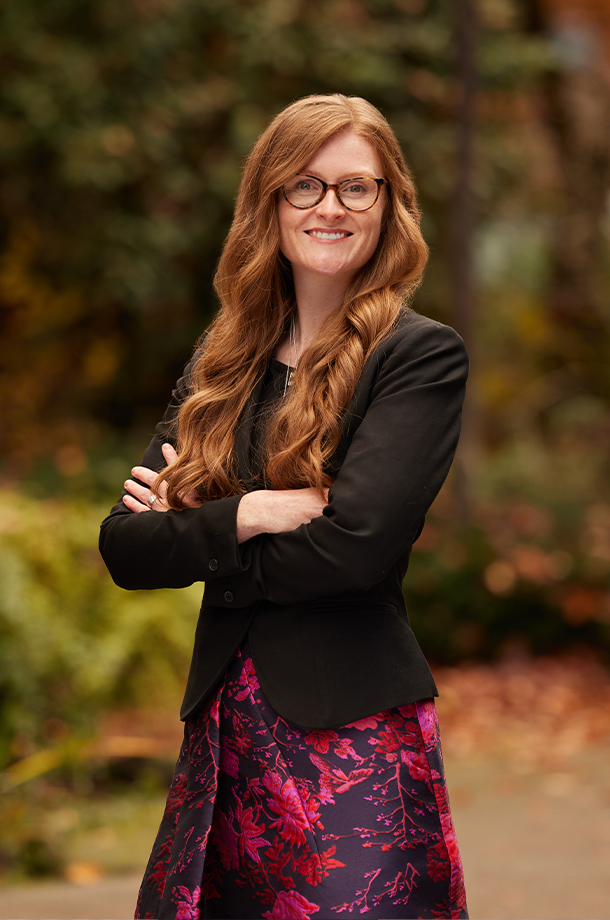
By Polly Storey
In British Columbia, will-makers are required to make “adequate, just and equitable” provision from their estates for their surviving spouses and children. Where someone dies with a will that a surviving family member considers falls short of that provision, they can apply to the Court for an Order giving them a greater share of the deceased’s estate. In order to enlarge (or in some cases, create) an estate against which to recover, litigants will sometimes try to reverse asset transfers made by the deceased during their lifetime. A tool that litigants invoke to do so is the Fraudulent Conveyance Act.
In Kramer v Kramer, 2023 BCSC 116,[1] Justice Young considered when assets settled into an alter ego trust may be “clawed back” into an estate as a fraudulent conveyance in order to satisfy a wills variation award.
Estate and Trust of Clara Kramer
The Kramer decision involved the estate of Clara Kramer (the “Deceased”). The Deceased’s two children, Karen and Leanne were the executors and sole beneficiaries of her estate. Leanne was also one of three trustees of an alter ego trust, together with two lawyers, settled for the benefit of the Deceased.
During the Deceased’s lifetime, she appointed Leanne as her attorney. On May 31, 2015, Leanne used the POA to settle the Kramer Alter Ego Trust (the “Trust”). Leanne transferred the majority of the Deceased’s assets into the Trust to be held for the benefit of the Deceased. On the Deceased’s death, the remainder of the Trust was to be distributed in accordance with the terms of the Deceased’s Will.
Though the exact value of the Trust assets is not reported, the evidence indicates that it was significant. The Trust assets included multiple pieces of real estate and shares in various private companies, and following the death of the Deceased, the Deceased’s liabilities totaling over $13M were paid from the Trust.
Karen’s Litigation
Following the Deceased’s death, Karen filed a lawsuit seeking to vary the Deceased’s Will in her favour under s. 60 of the Wills, Estates and Succession Act. Karen also included a claim under the Fraudulent Conveyance Act, alleging that she was a creditor of the Deceased. She said that the transfer of assets into the Trust should be set aside. Karen named Leanne (personally and as Executor) and the Trustees (including Leanne) as the Defendants.
The Defendants applied to summarily dismiss Karen’s claim under the Fraudulent Conveyance Act. They asserted that Karen was never a creditor of the Deceased. Alternatively, they said, if she had been a creditor, then she had been repaid prior to the settlement of the Trust. Finally, the Defendants argued that even if money had been owing to Karen when assets were transferred to the Trust, there was no fraudulent intent.
Karen’s Standing under the Fraudulent Conveyance Act
In order to bring a claim under the Fraudulent Conveyance Act, a litigant must be a “creditor or other” within the meaning of s. 1 of the Act. The law is clear, however, that a wills variation claim, without more and which crystallizes on the death of the Deceased, does not make a plaintiff a “creditor or other”.[2]
In Kramer, Karen did not dispute this proposition. Instead, she argued that she had made a personal loan to her mother many years earlier, which had accrued interest and was outstanding when the Deceased, by her attorney Leanne, transferred assets to the Trust. She contended that the Trust was settled in order to avoid paying her the money owing to her.
The Fraudulent Conveyance Act
The Fraudulent Conveyance Act has been described as seeming to be a “model of brevity and modernity”, consisting of just two sections:[3]
Fraudulent conveyance to avoid debt or duty of others
1 If made to delay, hinder or defraud creditors and others of their just and lawful remedies
(a) a disposition of property, by writing or otherwise,
(b) a bond,
(c) a proceeding, or
(d) an order
is void and of no effect against a person or the person’s assignee or personal representative whose rights and obligations are or might be disturbed, hindered, delayed or defrauded, despite a pretence or other matter to the contrary.
Application of Act
2 This Act does not apply to a disposition of property for good consideration and in good faith lawfully transferred to a person who, at the time of the transfer, has no notice or knowledge of collusion or fraud.
Despite the apparent simplicity of the legislation, a complex body of case law has developed. A key issue is often whether or not a litigant is a “creditor or other” within the meaning of s. 1, and whether or not an impugned transfer was made “to delay, hinder or defraud”. These questions were at issue in the Kramer decision.
Karen’s Loan
Karen based her claim under the Fraudulent Conveyance Act on funds she had advanced to the Deceased in 1998. In order to put Karen’s claim in context, Justice Young reviewed the background and noted that the Deceased had exerted financial control over her daughters.
In 1998, the Deceased contacted Karen. Karen’s evidence was that her mother “seemed desperate” for money, and asked for money from the sale of Karen’s condo. Karen said that her mother had been “insistent to the point of demanding” that Karen loan her money. Karen agreed, and directed two transfers totaling $164,000. She arranged to transfer the money from her RBC account in Ontario to her BMO account in Victoria, enabling the Deceased to withdraw the funds from Karen’s accounts using a power of attorney. (In 1995, the Deceased had demanded that Karen appoint her as a power of attorney.)
The Deceased withdrew the funds, but instead of using them personally, she deposited them to a corporate account.
Was Karen a “Creditor”?
Karen bore the burden of proving that she was a creditor of the Deceased at the material time. Karen was required to establish that when the Deceased, by her attorney Leanne, transferred assets to the Trust, the Deceased personally owed money to Karen.
A Personal Loan?
The issue of who the recipient of the loan funds had been was significant — if the loan had been made to the company, then the Deceased’s personal transfer of assets to the Trust was irrelevant.
Karen was adamant that she agreed to loan the money to her mother because she understood that the Deceased personally required the funds. She said she would not have agreed to advance the money if she had known it was to be used for the company, and if the Deceased had deposited the funds to the company account, then it was done without Karen’s knowledge or consent.
For their part, the Defendants submitted that the “documentary evidence unequivocally establish[ed] that the transfer comprising the Loan were deposited into [the company’s] bank account”. The only evidence supporting that Karen had made the loan to the Deceased personally, they said, was “[Karen’s] own bare assertion and belief”.
The judge accepted Karen’s own evidence that she thought her mother had personally needed money, noting that such conduct was in keeping with the Deceased’s practice of using the company accounts like personal bank accounts. There was also evidence from the Deceased’s long-time accountant, who said that the Deceased had told him Karen had loaned her $164,000. When he had asked the Deceased about the deposit to the company account, she told him to refer to it as the “Karen Housing Loan” in the books. He followed her instructions, and believed that the monies were deposited to the company account so that the Deceased could keep track of the amount.
On this evidence, and notwithstanding the documentary evidence to the contrary, Justice Young accepted that in 1998, Karen had made a personal loan to her mother (not to the company).
Terms of the Loan — Interest and Repayment?
Having established that Karen had loaned money to the Deceased personally, Justice Young considered the terms of the loan to determine if any funds were still owing at the time of the Trust transfer in 2015. Karen said that, based on a document prepared by the Deceased’s accountant in 2012, the loan bore interest of 5%.
In June of 2012, a dispute arose within the Kramer family when the Deceased sold a property. Karen demanded repayment of her loan from the net sale proceeds, and said she was to receive $300,000. As the Deceased’s lawyer had not heard of the loan before, he sought information from the Deceased. The Deceased was unable to recall any details or particulars of the loan, but nonetheless insisted that she owed Karen $300,000. Karen was also unable to provide any details or particulars (such as the date of the loan, principal amount, interest rate if any, or recipient). Faced with this gap and the Deceased’s instructions, the lawyer proposed that the Deceased, Leanne, and Karen enter into an agreement whereby Karen would receive $200,000 as either an advance on her inheritance or repayment of the loan, if Karen provided particulars of the loan. If Karen established that more than $200,000 was owing, then the Deceased would repay the balance as soon as practicable. On June 25, 2012, Karen received $200,000.
In the lawsuit, Karen claimed that this payment to her was not payment in full. She said that based on the interest calculation, she was owed a further $140,000.
The accountant’s evidence undermined Karen’s assertion. He deposed that to the best of his recollection, he created the calculation in 2012 when Karen or her lawyer asked him to produce a draft interest calculation to show what balance the loan would have been at, if the loan had carried interest. He used a 5% interest rate calculation, having determined that 5% was the rate being used for term deposits or similar investments.
Relying on this evidence, the judge found that Karen was not a creditor of the Deceased at the time of the Trust transfer. The draft interest calculation was hypothetical, and the judge was unable to conclude that there was an agreement that the loan would bear interest. As such, through transfer of $200,000 to Karen, the Deceased had overpaid the loan owing.
Fraudulent Intent?
The judge’s determination that Karen did not have standing under the Fraudulent Conveyance Act was sufficient to grant the Defendants’ application. Nonetheless, Justice Young went on to consider what constitutes “fraudulent intent” under the legislation.
The judge affirmed the requirement that a claimant under the Fraudulent Conveyance Act must establish that the transfer was done with the intent to put assets out of reach of creditors. However, there is no need for the claimant to show a dishonest or morally blameworthy intent. While it is insufficient to establish that the effect of a transfer is to hinder or delay creditors or others, an intention to put assets out of reach may be inferred based on the circumstances. Where the “badges of fraud” exist for a transfer,[4] the requisite intent may be presumed.
In Kramer, there was no evidence that the Trust was created to hinder, delay, or fraud Karen. There was also no evidence from which to draw an inference of fraudulent intent, and the direct evidence appeared to challenge such inference in any event. The judge noted the following:
1. the Trust was used to pay over $13M of the Deceased’s liabilities after her death, refuting any suggestion that the Trust was created to avoid paying creditors;
2. though the Trust was not established until 2015, it had been recommended years earlier by the Deceased’s advisors. In 2011, the Deceased’s tax lawyer recommended an alter ego trust. Later, in 2014 when developers were interested in the Deceased’s property, Leanne expressed concern that she and Karen would not be able to work together to negotiate a sale on behalf of the Deceased. She sought legal advice, and another lawyer recommended an alter ego trust;
3. at no time during discussions relating to the Trust did Leanne ever raise the issue of any debts owing to Karen. There was no evidence that any loan owing to Karen was considered or discussed during the Trust planning and settlement; and
4. there was direct evidence that the purpose of creating the Trust was for legitimate estate planning: to maximize the value of the Deceased’s assets by avoiding substantial probate fees, and to ensure the estate would be administered in an efficient, cost-effective, and non-confrontational manner.
In the result, the judge dismissed Karen’s claim under the Fraudulent Conveyance Act.
Fraudulent Intent and Alter Ego Trust Planning
Cases where an adult settles a trust via their power of attorney are reported relatively infrequently. Kramer v. Kramer is therefore a welcome example of how such trust planning is treated by the Courts. Justice Young’s decision also provides a useful analysis of the evidence that will be considered where such planning is alleged to constitute a fraudulent conveyance.
If you require assistance with your estate and trust planning, administration, or litigation matter, please contact Polly Storey or another member of Clark Wilson LLP’s Estates & Trusts practice group.[5]
[1] Kramer v. Kramer, 2023 BCSC 116.
[2] Justice Young relied on Mawdsley v. Meshen, 2012 BCCA 91, for this proposition. Earlier case law, including Hossay v. Newman, 1998 CanLII 15139 (BC SC), and Mordo v. Nitting et al, 2006 BCSC 1761, also established and affirmed that a claim under the wills variation provisions does not create standing under the Fraudulent Conveyance Act.
[3] Guthrie v. Abakhan & Associates Inc., 2017 BCCA 102.
[4] For a non-exhaustive list of such “badges”, see Balfour v. Tarasenko, 2019 BCSC 2212 at para. 60.
[5] With thanks to Adrienne Adams, Associate with Clark Wilson LLP.



